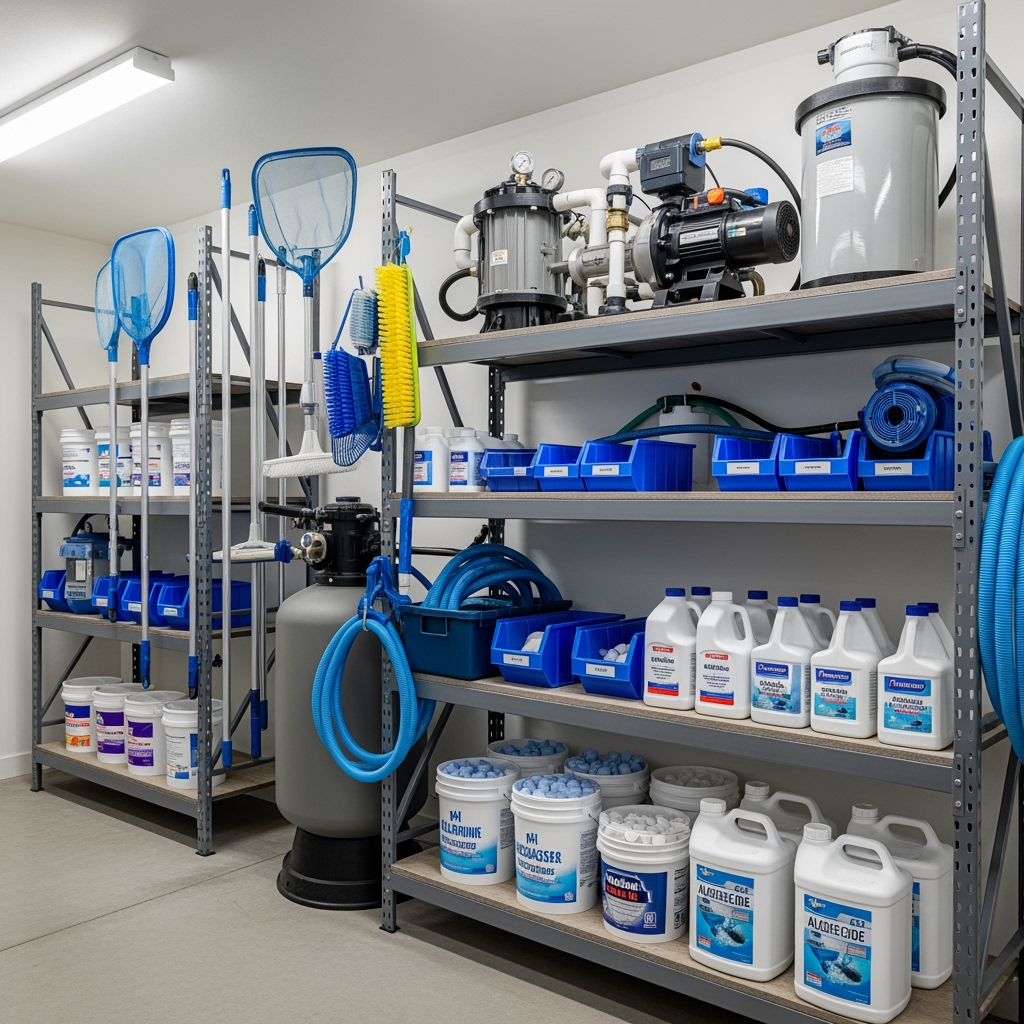The Importance of Proper Pool Equipment Storage
Properly storing your pool equipment during the off-season is crucial for protecting your investment and ensuring everything works perfectly when swim season returns. This comprehensive guide will walk you through the essential steps and best practices for storing pool equipment in a climate-controlled environment.

What Equipment Needs Special Storage?
Before diving into storage solutions, let’s identify the key equipment that requires proper protection:
- Pool pumps and motors
- Filters and filter media
- Automatic pool cleaners
- Pool covers and solar blankets
- Chemical testing equipment
- Maintenance tools and accessories
- Leftover pool chemicals
Climate-Controlled Storage Benefits
Climate-controlled storage offers several crucial advantages for pool equipment:
- Prevents rust and corrosion on mechanical components
- Maintains stability of electronic elements
- Protects rubber seals and gaskets from deterioration
- Preserves chemical integrity of testing equipment
- Prevents mold and mildew growth on covers and accessories
Preparation Steps for Storage
Follow these essential steps before storing your pool equipment:
- Clean and dry all equipment thoroughly
- Drain pumps and filters completely
- Remove batteries from electronic devices
- Check for and repair any damage
- Label all components clearly
- Document assembly configurations with photos

Chemical Storage Safety
Special attention must be paid to storing pool chemicals:
- Keep chemicals in original containers
- Store in a cool, dry place away from direct sunlight
- Maintain proper ventilation
- Keep chemicals separated to prevent reactions
- Store oxidizers away from flammable materials
- Follow all manufacturer storage guidelines
Organization Tips for Your Storage Unit
Maximize your storage space with these organization strategies:
- Use sturdy shelving units for equipment elevation
- Create designated zones for different types of equipment
- Implement a logical arrangement for easy access
- Use clear containers for small parts and accessories
- Keep frequently accessed items at front
- Maintain clear pathways for safety
Maintenance During Storage
Regular maintenance checks during storage help prevent issues:
- Monthly visual inspections for any problems
- Check for moisture accumulation
- Rotate mechanical parts periodically
- Monitor temperature and humidity levels
- Verify chemical container integrity
- Update inventory and condition records
Spring Preparation Checklist
When it’s time to reopen your pool, follow this checklist:
- Inspect all equipment for damage
- Test electronic components
- Check chemical expiration dates
- Clean storage residue from equipment
- Verify all parts are present
- Review assembly documentation
- Test equipment before reinstallation
Professional Storage Solutions
Consider these factors when choosing a storage facility:
- Climate control capabilities
- Security features
- Accessibility
- Unit size options
- Facility cleanliness
- Staff expertise
Storage Cost Considerations
Understanding storage costs helps with budget planning:
- Climate-controlled unit pricing
- Insurance coverage needs
- Storage duration options
- Size requirements
- Location convenience factor
- Additional service fees
Final Storage Success Tips
Ensure long-term storage success with these final recommendations:
- Create detailed equipment inventory
- Maintain organized documentation
- Schedule regular maintenance checks
- Plan for seasonal transitions
- Consider professional expertise when needed
- Review and update storage strategies annually
Proper pool equipment storage is an investment in protecting your valuable pool maintenance assets. By following these guidelines and utilizing climate-controlled storage solutions, you can ensure your equipment remains in excellent condition and ready for the next swimming season.










Leave a Reply